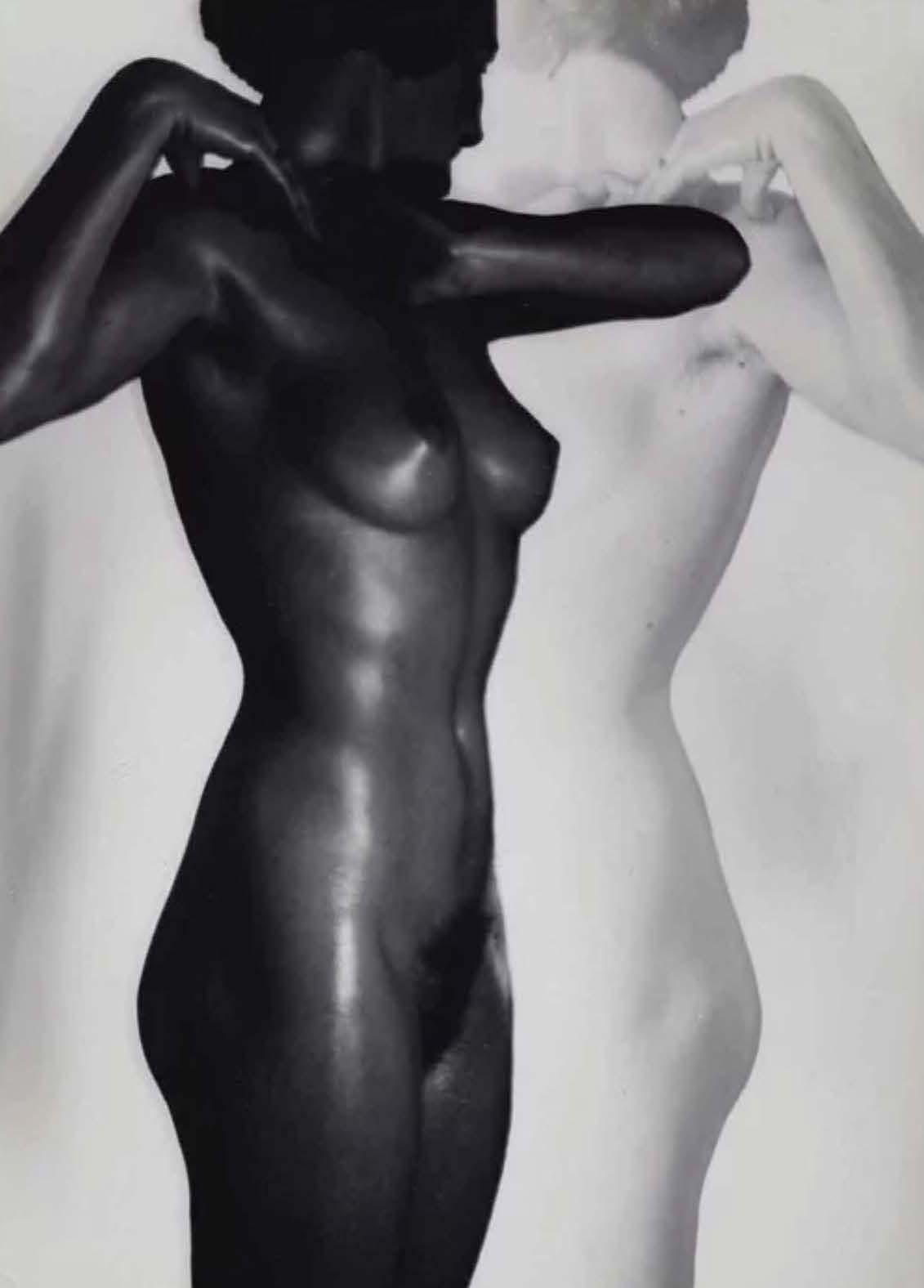Heinz Hajek-Halke (1898 - 1983) Black & White Nude, Preliminary Study, c. 1930 - 1936. Gelatin silver print. 23.6 x 17.2 cm (9 1/4 x 6 3/4 in.) Signed in ink, photographer?s ?HHH INVENTAR? stamp with annotations ?B/50/3?, ?F 227706? in pencil on the verso. Provenance Sotheby?s Paris, Friday 19 November, 2010, lot 71 Christie?s New York, Thursday 18 February, 2016, Lot 00100 Literature Klaus Honnef and Michael Ruetz: Heinz Hajek-Halke, Artist, Anarchist, Steidl, Göttingen, 2006, p.117 Klaus Honnef and Rainer Stamm: Vol. 1 Photography by Heinz Hajek-Halke / Vo. 2 Essays and Documents with an essay by Alain Sayag, Steidl Verlag, Göttingen, 2006, n.p. Lot Essay Heinz Hajek-Halke was a German photographer known predominantly for his ground-breaking experimental techniques and his exquisite manipulation of photomontage. His work has been heralded in Europe; namely France and Germany since almost the beginning of his photographic career when his innovative use of light and his dedication to the photogram became synonymous with the term ?Subjektive Photographie?.  Although he gained initial success and his work was widely published he kept himself exclusive and reclusive. He remained somewhat of an outsider as an artistic figure - preferring the company of the aerial photographer Willy Ruge (from whom he learned many photographic tricks) to the colourful personalities of his peers such as the Hungarian photographer Martin Munkà csi or the German news reporter Erich Salomon. Despite avoiding the limelight Hajek-Halke?s work remained very much a part of the avant-garde movement in Berlin.  Like an alchemist he chemically cooked, layered and laboured to produce his images combing a complex dark room practice with easily obtainable objects such as shards of glass, glue, wire, varnish, soot and fishbones conjuring images which are magically dream-like but strangely familiar. In all his decades of work however it seems that it is the nude montages which have really become the icons of his oeuvre. Black & White Nude, Preliminary Study c.1930-1936 shows one black and one white figure mirroring each other, their bodies almost fused together. The study is one of a series of images where the nudes are placed variously together and apart with their arms in different positions often in expressive poses which are typical of expressive art of the time. Hajek-Halke has used the same body to create hard and soft parts of the image with the black nude becoming shiny, smooth and marble-like providing a polar opposite figurine to the ethereal white body almost translucent beside.  At the time of his death in 1983 he was a little know German artist who had faded into obscurity, long forgotten as a Vanguard of German 20th Century photography. His tantalizing work, which made countless contributions to the world of photography and to promoting the camera as a malleable artist?s tool was only afforded a retrospective posthumously in 2002 at The Centre George Pompidou, Paris.
Lots will be viewable from June 9th 2022 until midday on July 1st 2022 at our Lower Sloane Street Auction galleries (69 Lower Sloane Street, London, SW1W 8DA). The auction will be held close-by at 1400 GMT at the iconic Sir Christopher Wren building, Wren House, The Royal Hospital.
For our Terms & Conditions, please click here.
See Full Terms And Conditions


